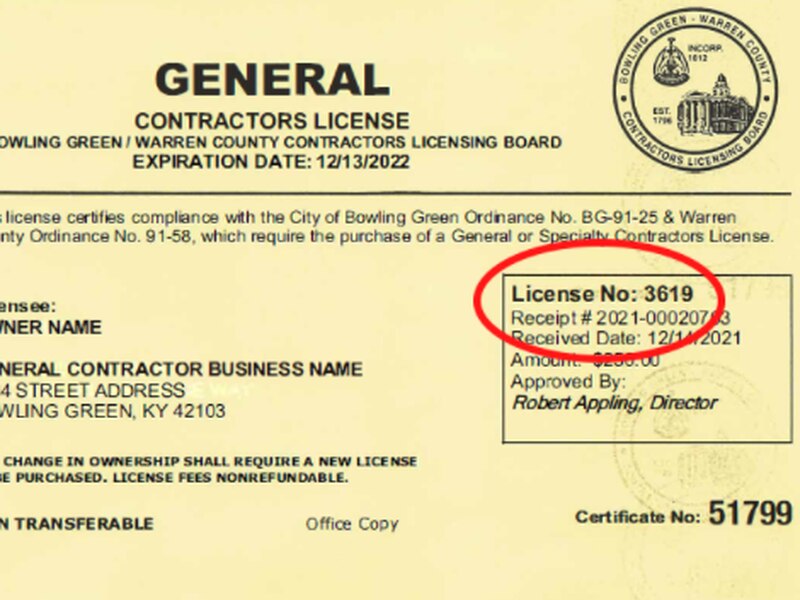
When you want to open a business as a handyman, you should know what your state requires to be licensed. There are also important things to consider when registering: job size limits, liability insurance, and cost. Before you begin working as a handyman, make sure to read up on these matters and consult an attorney. BizFilings' Contractor Business License Wizard makes it easy to find permits and licenses. This guide will make it easier for you to start your handyman enterprise.
For handyman licenses, the state must be notified
Each state has their own requirements when it concerns securing a handyman permit. New Mexico requires that you have at least two years' experience and pass an examination to obtain your license. New York only requires you to have a local license. It does not require you to be licensed as a handyman. North Carolina and North Dakota both require handymen to have a license if their work involves more than $1000.
Florida does not require a handyman license, but it does require that you register a business name and obtain a business tax receipt from Pasco County. You may be required to publish a newspaper ad if your business is being operated under a fictional name. A professional license may be required in another state. If you are in a different state, you can go to the website of your State Board of Contractors to learn more about your specific requirements.

Limits on the job size
These are the most important rules to follow when looking for a handyman. It is illegal to work on regulated services, such plumbing and electrical, without proper licensing. These regulations were created to protect the public from dangerous building practices. However, most smaller jobs don't require licenses. A handyman professional must know when they cross into general contractor territory. To keep your business running smoothly, it is crucial to communicate clearly with the handyman.
Check with your state building authority or local government to find out the maximum job size for handyman licenses. Some areas may have specific exemptions for specific projects. It is important to understand the requirements for your area so you can be prepared for any challenges that come your way. You may not need a permit for certain types of work, which are not covered by handyman licenses. Check the website of your local government or building authority to determine the regulations in your area.
Liability insurance
Handymen have many benefits from liability insurance. Handymen can claim against you company for damages or injuries to another person's property. You may also need to have additional insurance policies for your employees depending on what your specialties are. The requirement for liability insurance for handyman licenses is legal in many states. Here are five great reasons to purchase handyman liability coverage. It will protect your business's ability to operate smoothly.
Insurance should be purchased for all work vehicles, including those that transport cargo. A commercial auto policy is important as towing trailers can cause damage to other cars or property. Commercial auto insurance covers both small and major accidents. People often combine liability insurance and commercial insurance. It is important to remember that truck drivers should have insurance. The right coverage will protect against both lawsuits or accidents so make sure to get both.

Cost
A license is required to legally work as a handyman in your state. Visit the website of your state's contractor board to see if you need a license as a handyman. If you don’t have a license yet you may not have the ability to advertise. That means you could have to turn down work outside your scope of services. It's worth it to avoid getting into legal trouble.
Your state and your city will determine the start-up costs of a handyman service. You can expect to pay anywhere from $500 to $10,000 to register your business in your area, depending on the level of experience and complexity of the project. Many states require insurance for jobs between $500 and $10,000. The handyman may charge 20% to 50% more to purchase materials for the job. To get a discount, bundle multiple jobs together.
FAQ
How long does it take to complete a typical DIY job?
The average DIY project takes two to four hours. The complexity and difficulty of the project will determine how long it takes.
How do I find a trustworthy handyman?
Before hiring a handyman, you should always verify references. Ask friends and family who have used the handyman in the past. You can also look online for handymen's reviews.
Is it cheaper to hire handyman than general contractors for the same job?
Yes! Yes. Sometimes, a handyman may be cheaper than hiring a general contractors to do a job. This is especially true for those who have never had a contractor do a job. Additionally, a handyman will speed up the job completion because they can complete certain tasks quicker and more efficiently.
Are there any requirements to be a handyman?
In most states, you won't need a license to become an independent contractor (as opposed to a salaried employee). However, certain requirements must be met:
-
Must be at least 18
-
You should have a high school diploma, or a GED.
-
Complete a four-week course at a vocational school.
-
Check your background through the Department of Licensing.
-
Pay a $20 fee to register annually.
You will also need business licenses and workers' compensation insurance.
Should I pay a handyman by the hour or per-project basis?
Personal preference will dictate the final price. Some people prefer to pay an hourly rate so that they know how much their handyman costs. Some prefer to pay per completed job, as they might be working on multiple projects simultaneously. Either way works fine.
Statistics
- A franchise was approximately $110,000 with a franchise fee of $14,900, according to a spokesperson for a national handyman franchise. (en.wikipedia.org)
- More than 20% of homes in America have outdoor living spaces, including decks and patios. (mrhandyman.com)
- Mila keeps a commission of 20% for each completed service performed by Friends and charges various service fees regarding work done by Pros. (appjobs.com)
- Our handyman services for seniors are provided by professional senior helpers who have been serving the community for over 20 years with 98% customer satisfaction. (cantatahomeservices.org)
- With a strong housing market, the handyman and general maintenance worker industry are expected to grow by nearly 10% in the next decade. (housecallpro.com)
External Links
How To
How to Replace a Broken Tile
Step 1 – Remove the tiles.
Take out the tiles and place them on a new flooring surface. If you plan to use these tiles later, it is important that you keep them in good condition. To avoid any problems with replacements, take note of the pieces that have been damaged or lost.
Step 2: Choose New Tiles
Check out these options for tile replacement.
-
You can find a tile replacement that is similar to the one you have just removed.
-
To find the matching piece, use the measurements that you took while removing the tile. This will make it easy to get the correct size without having again to measure.
-
Look for various colors, patterns, textures, sizes, shapes, etc.
-
If you have a preference for grout, consider what it would be best to use. Some people prefer solid color; others enjoy mixing it up.
-
You should ensure that the tile you choose is resistant to moisture.
-
Finally, consider the placement of your new tile -- you can save time and money by ensuring the area you're installing it in has enough space for proper installation.
-
Once you've found the tile that suits your needs, you can place your order online.
Step 3 - Place the tiles.
For your new tiles, use the same method that you used to install them. It's important to align them correctly in order for them to fit together.
Step 4 - Clean up
Clean up any debris on the floor before you apply the last layer of protective material.
This will keep dust and dirt from getting into the grout between tiles, which could lead to mold.
Step 5: Sand down the Floor
After you have cleaned everything, sand the floor to remove any particles that were left from the previous step.
Step 6 -- Finish Off
Once the floor is smooth, apply the protective coatings. You should wait until this stage as wet paint can stain new tiles.
For stain protection, you can always use a product called "damp&dry" to clean your floors.
It won't solve every problem after your tiles are installed. An anti-slip coating can be added to the protective layer for children who are often running around.
Finally, don't forget to keep your protective sealer in place for several weeks before moving into your new home.